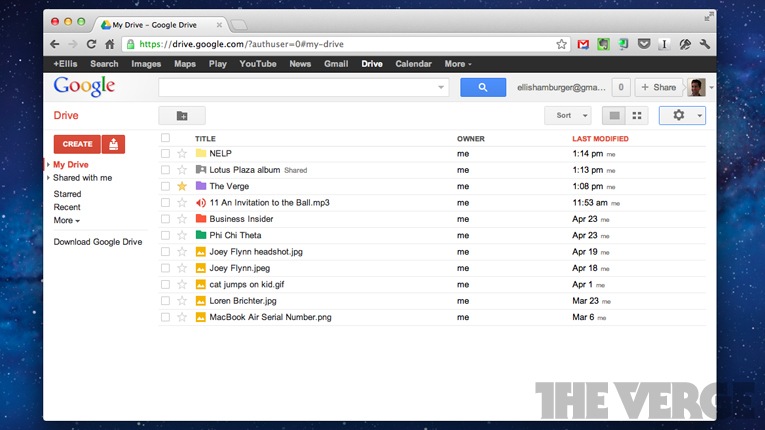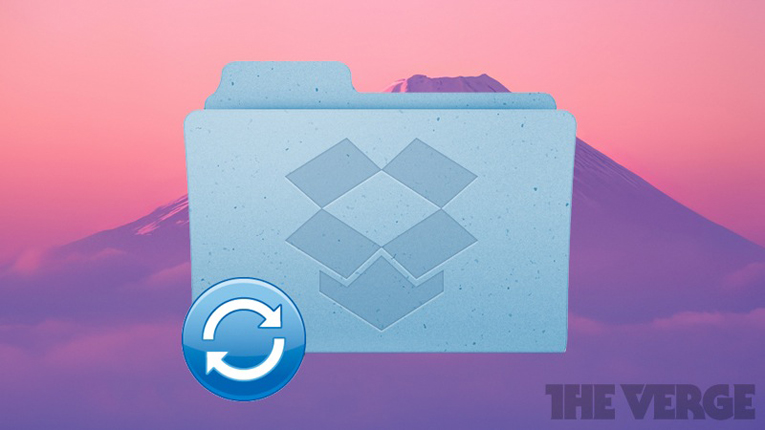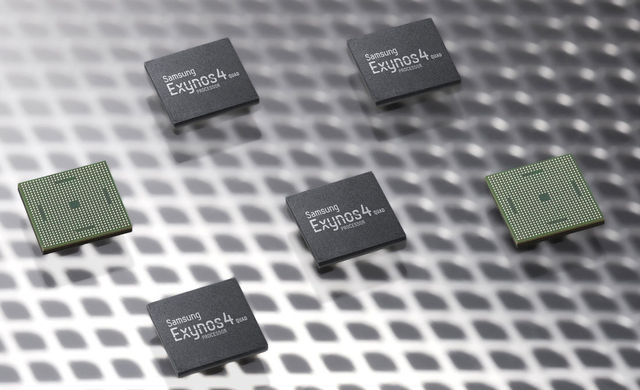Does Drive stand a chance against sync and backup veterans?
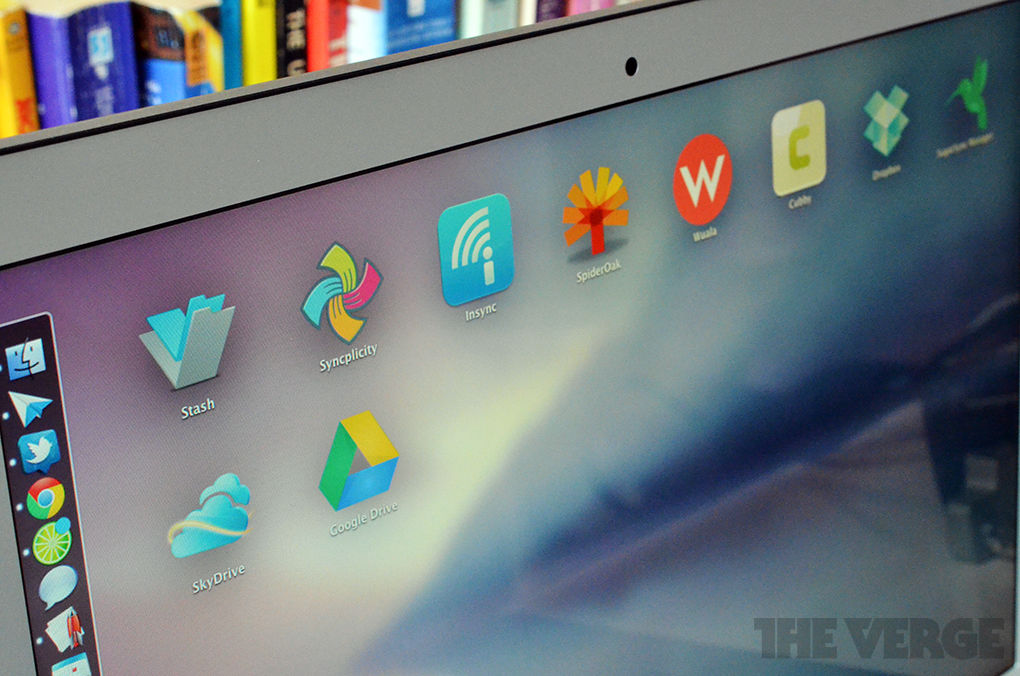
Google's very own "Loch Ness monster," also known as Google Drive, has finally launched. It's the new face of Google Documents, and it's also Google's oft-rumored Dropbox-killer. It enters a scene crowded with competitors besides Dropbox that let you sync multiple folders, collaborate with friends, and stream data to your mobile device — so how does Drive fare?
Google Drive
While Google Drive isn't much more than a Docs rebranding that syncs to a folder on your computer, it has a few key features that make it worth checking out. First, Drive can open up to 30 kinds of files right inside your browser. Dropbox and a few others open files inside a "web gallery," but Drive opens Photoshop files — even if you don't have Photoshop on your computer. To this extent, Drive creates a QuickLook-esque experience inside your web browser that makes it much easier to thumb through files. Drive also includes an option to turn on OCR text scanning, which means that when you upload images to Drive, Google will scan the images for text and make them searchable (similar to Evernote Premium).
Drive launches on the web, for Mac, Windows, and Android devices today, with iOS support on the way "in the coming weeks." The Android app (which replaces Google Docs) won't stream your content, however, unlike some competitors like Dropbox and SugarSync. Drive comes with 5GB of storage free, with generous upgrade options like $2.49/month for 25GB of extra storage and $4.99/month for 100GB of storage. Pricing: 25GB for $2.49/month; 100GB for $4.99/month; 200GB for $9.99/month; more options from Google.

Dropbox
Dropbox is the go-to solution for syncing files across multiple devices for a reason. It's a no-brainer to use, allows groups to share files with a couple clicks, and offers few settings for you to mess up. Perhaps the app's greatest strength is the API it's built on, which hundreds of developers have used to create apps that utilize Dropbox. It's right up there with Evernote as the most developer-friendly storage/syncing platforms that apps can leverage to help you access your data everywhere. But, Dropbox does have some drawbacks: It offers just 2GB of storage for free, and forces you to keep everything you need synced inside of just one folder (though you can pick which folders you want synced within your Dropbox). Extra storage is also very expensive — Dropbox offers 100GB of storage for $19.99/month, while Drive offers the same amount of storage for $4.99/month. Additionally, it would be pretty futile to try to use Dropbox as a complete backup tool because it would mean that you've have to store everything you want to back up inside your Dropbox folder. Dropbox is ultra-reliable and plugged in to all your favorite apps, but doesn't offer a ton of options. Pricing: 50GB for $9.99/month ($99.99/year); 100GB for $19.99/month ($199.99/year).

SugarSync
 SugarSync is perhaps the most well-known alternative to Dropbox, and even comes pre-loaded on all new Lenovo computers and some smartphones (like devices from SoftBank). SugarSync's claim to fame is that it's on just about every platform, gets updated frequently, and lets you micro-manage what you want to sync. For example, SugarSync lets you pick folders all over your computer to sync, then lets you choose whether you want each folder synced to all of your devices, or to just specific devices. Additionally, SugarSync lets you add password protection to files and folders when sharing them publicly, which not all competitors can't brag about. The company's app for iPhone and iPad is also decent (though it's pretty ugly, like the desktop app), and even allows you to stream a whole album of songs in a row from the cloud, unlike Dropbox. Lastly, SugarSync gives you 5GB for free to join. Pricing: 30GB for $4.99/month ($49.99/year); 60GB for $9.99/month ($99.99/year); 100GB for $14.99/month ($149.99/year).
SugarSync is perhaps the most well-known alternative to Dropbox, and even comes pre-loaded on all new Lenovo computers and some smartphones (like devices from SoftBank). SugarSync's claim to fame is that it's on just about every platform, gets updated frequently, and lets you micro-manage what you want to sync. For example, SugarSync lets you pick folders all over your computer to sync, then lets you choose whether you want each folder synced to all of your devices, or to just specific devices. Additionally, SugarSync lets you add password protection to files and folders when sharing them publicly, which not all competitors can't brag about. The company's app for iPhone and iPad is also decent (though it's pretty ugly, like the desktop app), and even allows you to stream a whole album of songs in a row from the cloud, unlike Dropbox. Lastly, SugarSync gives you 5GB for free to join. Pricing: 30GB for $4.99/month ($49.99/year); 60GB for $9.99/month ($99.99/year); 100GB for $14.99/month ($149.99/year).
Insync
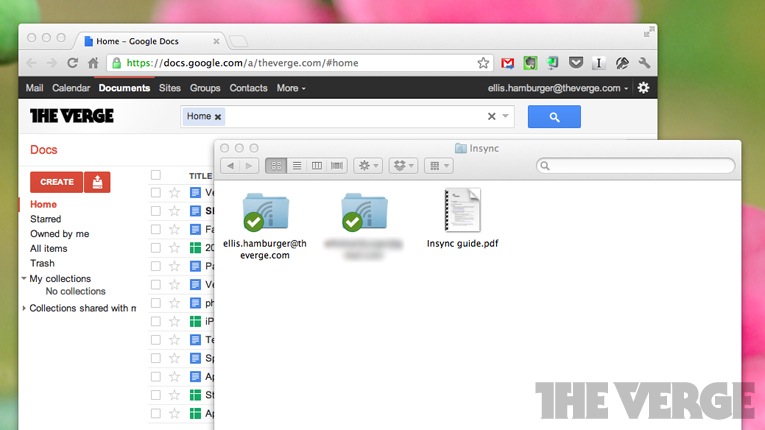 Insync's motto is "8x cheaper than Dropbox," while providing many of the same features and capabilities. After the Drive launch today, this isn't the case any longer, but Insync is still just as cheap as Drive. Insync uses the free storage you already have as a part of your Google Docs (now Drive) account, which means that for each Google account you have, you get 5GB of free storage. If you want to upgrade, Google's prices are much cheaper than the Amazon AWS prices Dropbox charges for storage upgrades. So anyway, Insync works really well as a Dropbox substitute, syncing without a hitch to your Google Drive account. Each account gets its own folder on your computer, but you can't sync any other folders on your computer unless they are inside an Insync folder.
Insync's motto is "8x cheaper than Dropbox," while providing many of the same features and capabilities. After the Drive launch today, this isn't the case any longer, but Insync is still just as cheap as Drive. Insync uses the free storage you already have as a part of your Google Docs (now Drive) account, which means that for each Google account you have, you get 5GB of free storage. If you want to upgrade, Google's prices are much cheaper than the Amazon AWS prices Dropbox charges for storage upgrades. So anyway, Insync works really well as a Dropbox substitute, syncing without a hitch to your Google Drive account. Each account gets its own folder on your computer, but you can't sync any other folders on your computer unless they are inside an Insync folder.
The first time you open the app, you won't even see an application screen. Instead, you're popped into a Google permissions screen online, an indication of how closely Insync is tied with Google. Once you initiate a sync, all of the Google Docs crap you've ever opened will get downloaded to your computer. One cool feature is that unlike Drive, Insync will automatically convert your files into formats (like .doc) that you can read on your computer. Drive syncs Docs to your computer as web shortcuts. In fact, you might want to use Insync solely as a file manager for your Google Docs files since it lets you drag-and-drop things around between folders (labels in Google Docs). Move files within these folders and the next time you check Google Docs, the file will have switched labels. In the end, Insync is a great solution for syncing files to and from your Google Docs account, but doesn't let you sync much else. Also, the company's mobile apps are in private beta, which means you can't use them just yet. Pricing: 25GB for $2.49/month; 100GB for $4.99/month; 200GB for $9.99/month; more options from Google.

LogMeIn Cubby
 Cubby, a brand new product from remote desktop pros LogMeIn, is a hybrid of SugarSync and Dropbox. Cubby operates a lot like Dropbox, but lets you pick folders around your computer to sync like with SugarSync. Besides that, Cubby doesn't offer much in terms of options and customization for syncing to the cloud, but does offer more for users trying to sync files between two desktop computers that are always on. For this kind of scenario, Cubby offers "unlimited peer-to-peer syncing" between computers, assuming both computers stay turned on. If you make changes to a file on one, it will instantly sync to the other. Cubby is ultimately crippled by the fact that it doesn't yet offer a public API for developers, so it can't plug in to any other apps you use. Yet, it shows a ton of potential because of how fast and modern its desktop and web interface are. Pricing: in beta, n/a.
Cubby, a brand new product from remote desktop pros LogMeIn, is a hybrid of SugarSync and Dropbox. Cubby operates a lot like Dropbox, but lets you pick folders around your computer to sync like with SugarSync. Besides that, Cubby doesn't offer much in terms of options and customization for syncing to the cloud, but does offer more for users trying to sync files between two desktop computers that are always on. For this kind of scenario, Cubby offers "unlimited peer-to-peer syncing" between computers, assuming both computers stay turned on. If you make changes to a file on one, it will instantly sync to the other. Cubby is ultimately crippled by the fact that it doesn't yet offer a public API for developers, so it can't plug in to any other apps you use. Yet, it shows a ton of potential because of how fast and modern its desktop and web interface are. Pricing: in beta, n/a.

Apple iCloud
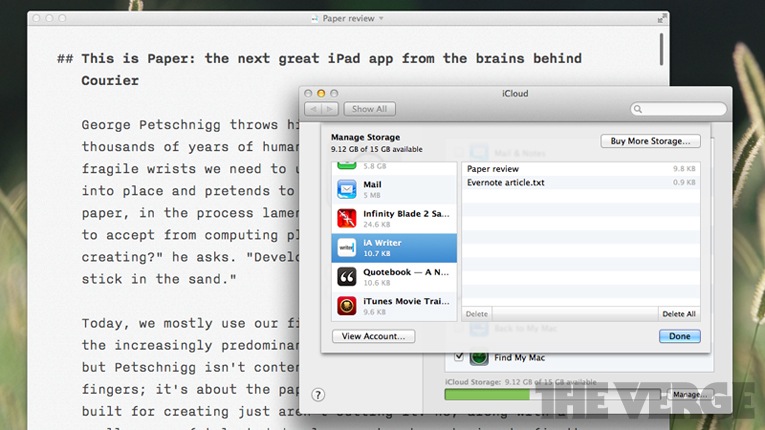 iCloud isn't much of a Dropbox competitor, but if all you need synced between your devices are text documents, it can be a pretty seamless solution. Various apps such as Pages and iA Writer have iCloud sync capabilities, saving your work after every keystroke and instantly sending changes to Apple's servers. Once you open up iA Writer or Pages on another Apple device or Mac with OS X Lion, you'll already be working with the most recent version of your document. Additionally, Lion saves versions of your documents locally using Time Machine so you can return to older versions of your document, but only on your machine. While iCloud is a very rudimentary document-syncing solution, it might also be the simplest one to use. And if you need to stream music or videos you've purchased from the cloud, you can do that, too. Pricing: additional 10GB for $20/year; additional 20GB for $40/year; additional 50GB for $100/year.
iCloud isn't much of a Dropbox competitor, but if all you need synced between your devices are text documents, it can be a pretty seamless solution. Various apps such as Pages and iA Writer have iCloud sync capabilities, saving your work after every keystroke and instantly sending changes to Apple's servers. Once you open up iA Writer or Pages on another Apple device or Mac with OS X Lion, you'll already be working with the most recent version of your document. Additionally, Lion saves versions of your documents locally using Time Machine so you can return to older versions of your document, but only on your machine. While iCloud is a very rudimentary document-syncing solution, it might also be the simplest one to use. And if you need to stream music or videos you've purchased from the cloud, you can do that, too. Pricing: additional 10GB for $20/year; additional 20GB for $40/year; additional 50GB for $100/year.
SkyDrive
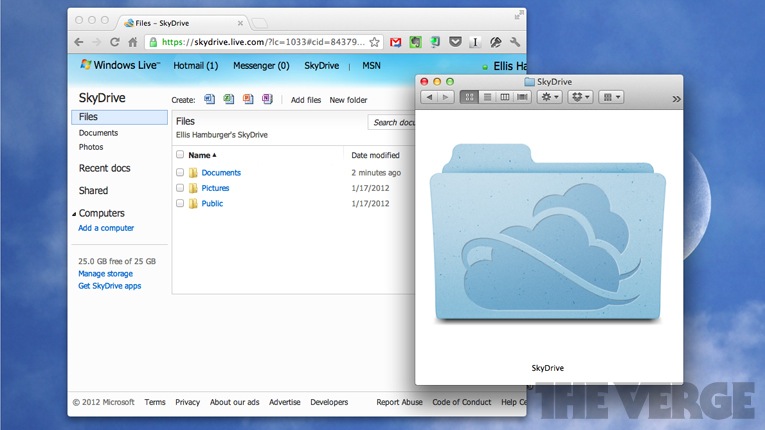 SkyDrive is Microsoft's syncing solution, and in our testing, it works very smoothly. SkyDrive starts things off right by offering 7GB of free storage, which is best in class. If you move quickly (and have used SkyDrive before), you can quickly nab 25GB of total free storage space. SkyDrive really excels at syncing documents created using OneNote and other Microsoft Office products like Word, Excel, and PowerPoint. SkyDrive creates an experience akin to iCloud, but for Microsoft products — except you can also edit documents in groups like you can with Box or Dropbox. And like with Drive (and Google Docs), you can edit (and create) documents for free within your browser.
SkyDrive is Microsoft's syncing solution, and in our testing, it works very smoothly. SkyDrive starts things off right by offering 7GB of free storage, which is best in class. If you move quickly (and have used SkyDrive before), you can quickly nab 25GB of total free storage space. SkyDrive really excels at syncing documents created using OneNote and other Microsoft Office products like Word, Excel, and PowerPoint. SkyDrive creates an experience akin to iCloud, but for Microsoft products — except you can also edit documents in groups like you can with Box or Dropbox. And like with Drive (and Google Docs), you can edit (and create) documents for free within your browser.
SkyDrive also lets you share public links, view-only private links, and view/edit private links, which is nice to have. Unfortunately, there's no sharing yet from the Mac app and you can't download items for offline viewing on all mobile platforms. But as a whole, In the end, SkyDrive makes for an extremely well-rounded entry — especially if you forgot to sync something with it. If your home PC is turned on, you can still access all your files using SkyDrive's "Fetch" feature.Pricing: additional 20GB for $10/year; additional 50GB for $25/year; additonal 100GB for $50/year.

Mozy Stash
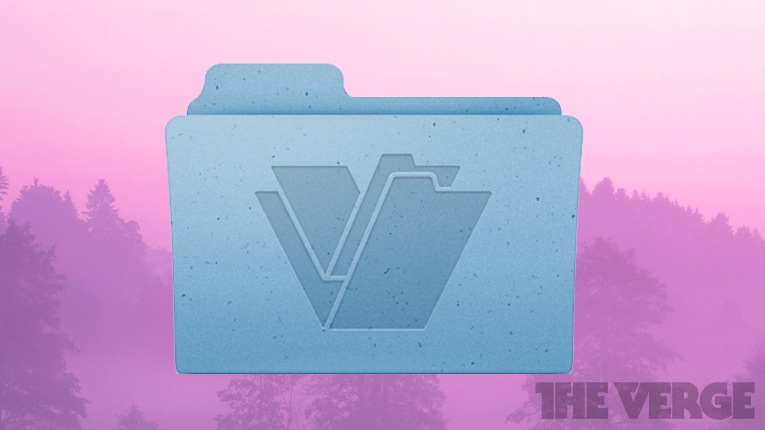 Mozy Stash is modeled after Dropbox, which is a good thing, but this also means it doesn't offer any features that make it worth using over the industry leader. But, if you're already a Mozy customer, Stash works. You have one folder that the desktop client (which lives in your menu bar) constantly monitors. If you make changes, these changes are synced to other computers hooked up to Mozy, and to Mozy's mobile apps. But since there's no public API, Stash doesn't hook up to any other apps so you can use it for storage. And while you can access your files through a web app, the interface is exceedingly rudimentary and doesn't even allow you to view files without downloading them. Pricing: 50GB for $5.99/month (one computer); 125GB for $9.99/month (three computers).
Mozy Stash is modeled after Dropbox, which is a good thing, but this also means it doesn't offer any features that make it worth using over the industry leader. But, if you're already a Mozy customer, Stash works. You have one folder that the desktop client (which lives in your menu bar) constantly monitors. If you make changes, these changes are synced to other computers hooked up to Mozy, and to Mozy's mobile apps. But since there's no public API, Stash doesn't hook up to any other apps so you can use it for storage. And while you can access your files through a web app, the interface is exceedingly rudimentary and doesn't even allow you to view files without downloading them. Pricing: 50GB for $5.99/month (one computer); 125GB for $9.99/month (three computers).
SpiderOak
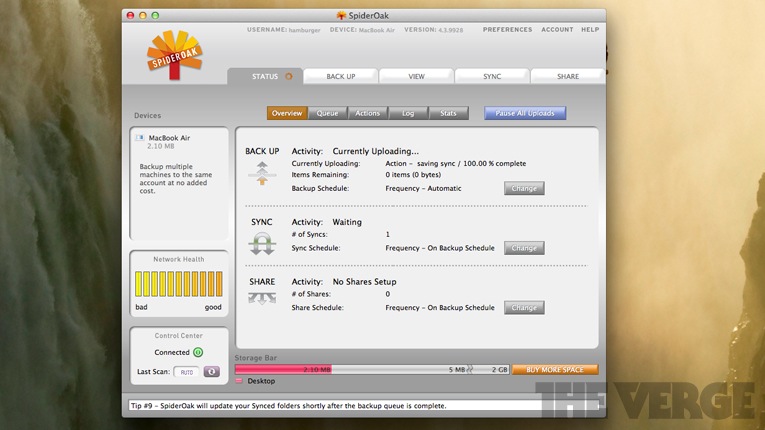 Whereas SugarSync puts sync first and then backup, SpiderOak puts backing up your computer at top priority. Once you pick folders to back up, you can choose one to sync to multiple computers. Except in order to do so, you'll need to designate which folders should correspond with each other on each computer. For example, you need to tell the app that "Folder A" on your laptop (which you've already backed up using SpiderOak) should sync with "Folder B" on your desktop (which you've already backed up using SpiderOak). This means that you can't even finish the setup process until you have access to your other computer again so you can create a sync folder and back it up. Pricing: 100GB for $10/month ($100/year); additional 100GB increments at same price.
Whereas SugarSync puts sync first and then backup, SpiderOak puts backing up your computer at top priority. Once you pick folders to back up, you can choose one to sync to multiple computers. Except in order to do so, you'll need to designate which folders should correspond with each other on each computer. For example, you need to tell the app that "Folder A" on your laptop (which you've already backed up using SpiderOak) should sync with "Folder B" on your desktop (which you've already backed up using SpiderOak). This means that you can't even finish the setup process until you have access to your other computer again so you can create a sync folder and back it up. Pricing: 100GB for $10/month ($100/year); additional 100GB increments at same price.
AVG LiveKive
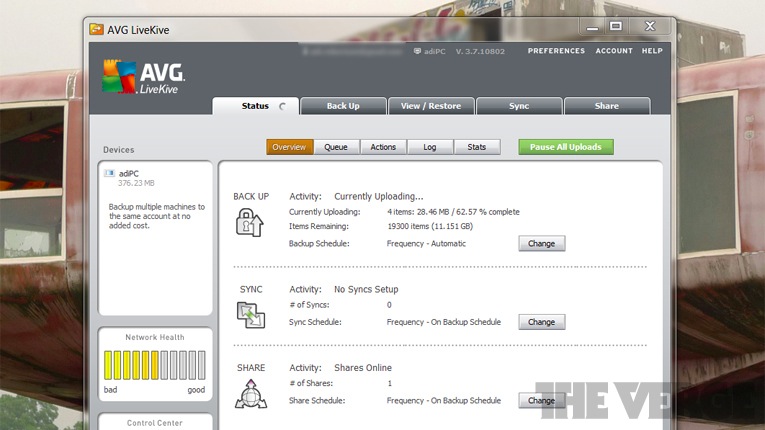 If AVG's LiveKive app looks familiar, it's because it is. AVG licensed an entire suite of syncing and backup software from SpiderOak and has rebranded it as its own. This means the sluggish and cumbersome experience is here too, while the mobile app is decent, as we stated about SpiderOak. So what's the draw? AVG's upgrade structure is less expensive than SpiderOak's by a long shot. AVG gives you unlimited storage for $79.99/year, while SpiderOak gives you 100GB for the same price. Also, the Mac version of the app has mysteriously disappeared, so your only desktop option is Windows, for now. Price: 25GB for $49.99/year; 50GB for $59.99/year; "unlimited" (500GB, throttled after that) for $79.99/year.
If AVG's LiveKive app looks familiar, it's because it is. AVG licensed an entire suite of syncing and backup software from SpiderOak and has rebranded it as its own. This means the sluggish and cumbersome experience is here too, while the mobile app is decent, as we stated about SpiderOak. So what's the draw? AVG's upgrade structure is less expensive than SpiderOak's by a long shot. AVG gives you unlimited storage for $79.99/year, while SpiderOak gives you 100GB for the same price. Also, the Mac version of the app has mysteriously disappeared, so your only desktop option is Windows, for now. Price: 25GB for $49.99/year; 50GB for $59.99/year; "unlimited" (500GB, throttled after that) for $79.99/year.
Wuala by LaCie
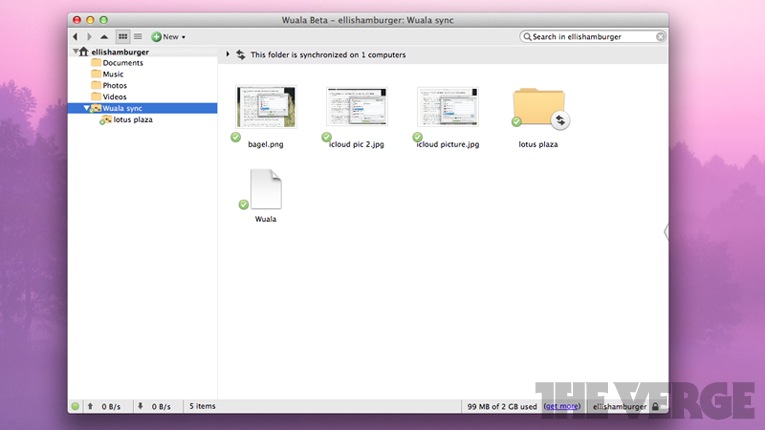 Wuala is built by storage veterans LaCie, so they take privacy really seriously. In fact, you can't even access your files through Wuala's website because the company's worried about transmitting data through your browser. Instead, it uses a Java web-app alongside desktop and mobile apps so all encryption takes place on your device. Wuala features a very fleshed out desktop client that lets you share files publicly or privately with just a couple clicks. While Wuala doesn't manage sync folders across computers as well as SugarSync does, it's best in class in terms of offering a great experience on the desktop for syncing or backing up files. Another nice touch is that you can switch off "continuous" sync and switch to backup intervals if you'd like to. Pricing: 20GB for 29€/year; 50GB for 69€/year; 100GB for 119€/year.
Wuala is built by storage veterans LaCie, so they take privacy really seriously. In fact, you can't even access your files through Wuala's website because the company's worried about transmitting data through your browser. Instead, it uses a Java web-app alongside desktop and mobile apps so all encryption takes place on your device. Wuala features a very fleshed out desktop client that lets you share files publicly or privately with just a couple clicks. While Wuala doesn't manage sync folders across computers as well as SugarSync does, it's best in class in terms of offering a great experience on the desktop for syncing or backing up files. Another nice touch is that you can switch off "continuous" sync and switch to backup intervals if you'd like to. Pricing: 20GB for 29€/year; 50GB for 69€/year; 100GB for 119€/year.
Box
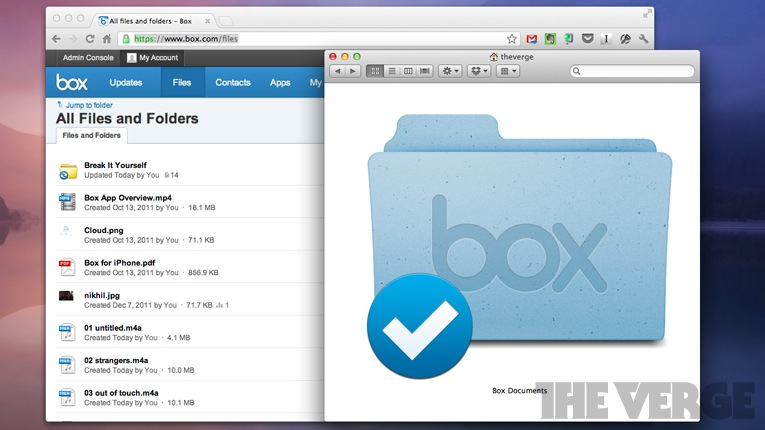 Aside from the Dropbox, Box might be the most integrated service since its API is so popular with productivity apps like QuickOffice. In this way, it's easy to integrate Box storage into your workflow — and with sync (offered free, but only to business customers at this point), it becomes even more powerful. There's detailed version-tracking, a feed of every sync and change you've made to a document, elaborate sharing features, and frequently updated and polished apps for just about every platform. Box Sync isn't yet available for consumers, but we'd keep our eyes peeled. Its Google Docs integration combined with tons of collaboration features and sync for consumers would make it a very formidable competitor. But still, like Dropbox, you can only sync with one folder on your computer. Pricing: for personal account, which does not include Box Sync: 25GB for $9.99/month; 50GB for $19.99/month.
Aside from the Dropbox, Box might be the most integrated service since its API is so popular with productivity apps like QuickOffice. In this way, it's easy to integrate Box storage into your workflow — and with sync (offered free, but only to business customers at this point), it becomes even more powerful. There's detailed version-tracking, a feed of every sync and change you've made to a document, elaborate sharing features, and frequently updated and polished apps for just about every platform. Box Sync isn't yet available for consumers, but we'd keep our eyes peeled. Its Google Docs integration combined with tons of collaboration features and sync for consumers would make it a very formidable competitor. But still, like Dropbox, you can only sync with one folder on your computer. Pricing: for personal account, which does not include Box Sync: 25GB for $9.99/month; 50GB for $19.99/month.
 Syncplicity
Syncplicity Syncplicity has gone undercover in the desktop sync scene, in part because it's primarily meant for business users. But, it has some interesting features for consumers that make it worth checking out like Google Docs integration and a news feed of activity (like in Box). First off, you can sync folders from anywhere on your computer, but there really aren't any settings to change besides this one — on the desktop, or on the web. Syncplicity ties in to Google Docs to download and sync your data, but it doesn't work as well as with Insync or Drive. One bonus that Syncplicity offers (like Insync) is that you can actually edit documents stored in your Drive and browse versions in the Syncplicity mobile app. A couple things we don't like: the desktop app doesn't have any preferences to change, you can't preview files in the ultra-sluggish web browser view, and you can't add more than two devices to your sync under the company's free tier. In the end, Syncplicity isn't the most well-rounded experience (and isn't pretty, either), but it is a decent app. Pricing: 50GB for $15/month.
Syncplicity has gone undercover in the desktop sync scene, in part because it's primarily meant for business users. But, it has some interesting features for consumers that make it worth checking out like Google Docs integration and a news feed of activity (like in Box). First off, you can sync folders from anywhere on your computer, but there really aren't any settings to change besides this one — on the desktop, or on the web. Syncplicity ties in to Google Docs to download and sync your data, but it doesn't work as well as with Insync or Drive. One bonus that Syncplicity offers (like Insync) is that you can actually edit documents stored in your Drive and browse versions in the Syncplicity mobile app. A couple things we don't like: the desktop app doesn't have any preferences to change, you can't preview files in the ultra-sluggish web browser view, and you can't add more than two devices to your sync under the company's free tier. In the end, Syncplicity isn't the most well-rounded experience (and isn't pretty, either), but it is a decent app. Pricing: 50GB for $15/month.

Head to head

Liner notes

At the end of the day, Google Drive is exactly what Google fans have been looking for: a place to store all of your Google stuff. It syncs to your computer effortlessly, but Dropbox already does that. So where does it beat Dropbox? Since Drive replaces and builds on Google Docs, it's essentially a full-featured cloud document editing and storage suite. Dropbox is still the champ at syncing since it's so reliable and on so many platforms, but if you're looking for the best way to collaborate with others using online documents, Drive is the way to go. If you're looking for the ability to sync and also backup multiple folders around your computer, SugarSync is head and shoulders above the rest.
No one sync solution is perfect, so we attempted to give a fair shot to every mainstream app we've heard of and could find online. So, we wanted to provide explanations for why two mainstream options were not included in our list. First,JungleDisk was not included primarily because there is no free way to use the service, and we've compared services that you can use free of charge (like Google Drive). The least expensive option is $3/month, which includes 5GB of storage — a lot compared to other services we looked at. Additionally, most of the apps we checked out offer mobile apps that have been updated recently, while JungleDisk's iOS app has not been updated since August 2010, almost two years ago.
Another option we skipped is AeroFS, a very cool new company that lets you "sync" files between computers as long as both computers are turned on. LogMeIn's Cubby provides a similar feature, but also includes traditional "sync to the cloud" capabilities, a baseline feature for our comparison. Thus, AeroFS, which cannot sync your files to "the cloud," was not included.
A third detail we want to mention has to do with the criteria we used to judge these apps. We didn't provide each app with a Verge Score, but did measure them in terms of criteria we came up with, which we submitted to each sync app's parent company. Data from our charts is a combination of points we deduced from using the apps and points we gathered from responses to the criteria we submitted to each company.
Also, a few clarifications:
Multiple folder sync: the ability to sync multiple folders outside of your primary sync folder. For example, SugarSync allows you to pick folders around your computer to sync, while Dropbox does not.
Download to mobile: "pin" files to mobile for offline use on all mobile platforms
Password-protected files: whether links you send out to others can be password-protected or not. Clearly all of these services offer password protection for accessing all of your files.
Bandwidth-throttling: this is a negative attribute, and corresponds to companies that admitted to throttling bandwidth when you upload large amounts of files.
